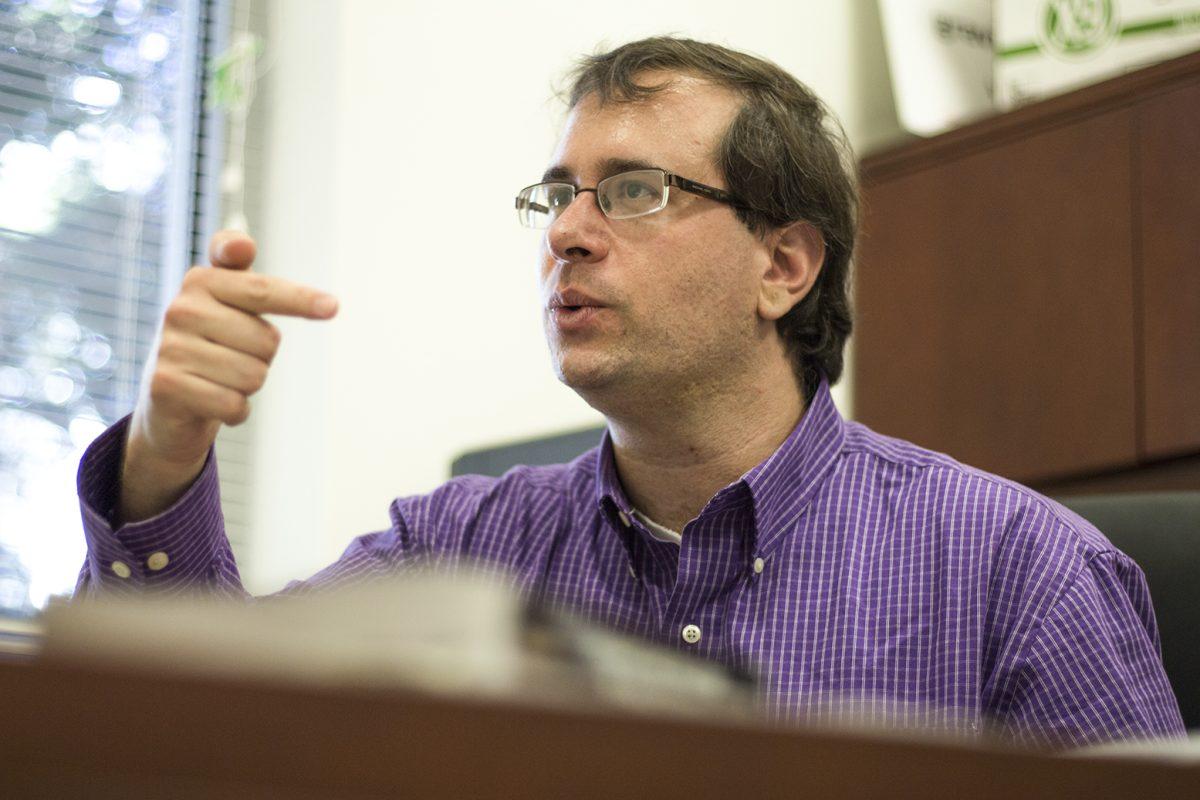Detection of gravitational waves impacts educational institutions
Michael Kesden, a member of the Cosmology and Astrophysics Group at UTD with research interests in black holes and gravitational waves, shares his views on the new scientific discovery.
Q: What was your initial reaction to the news that gravitational waves had been detected?
A: I was very excited. There had been rumors for months that there had been indications of a binary black hole system. I was a graduate student at Cal Tech, which is one of the two headquarters for the Laser Interferometer Gravitational Wave Observatory lab. LIGO had been a big deal back from 2000, when I started graduate school. Even in the early ’90s, the project had been getting support from the National Science Foundation. This project had been in the works for over 20 years.
The expectation was the first detections would be in 2017 or 2018. What actually happened was that the detection actually happened on September 14, 2015, five days before the official science run. They were fortunate that even before they started they got this very large signal. That was really exciting and surprising to me.
Q: How does this discovery impact institutions of higher education, especially those centered on research like UTD?
A: The LIGO collaboration is made up of something like a thousand people. It’s an international collaboration made up of many institutions in the United States and abroad. Most immediately, it impacts people whose work is focused on black holes and gravitational waves like mine is. Science research in this country is reliant on funding from the federal government and the federal government is ultimately answerable to Congress and the public. Keeping the public informed and excited about our progress in scientific research is a crucial step in maintaining support for science. Funding for science oscillates, so it’s important to keep the public appreciative of the exciting discoveries we’re making.
There are students here at UTD and students at all these institutions that are involved in every aspect of analyzing the data, constructing the instruments and exploring theoretical implications. This is also providing more educational and research opportunities for students.
Q: What changes can we expect in the Physics department at UTD?
A: I expect there to be more interest in general relativity, gravitational waves and black holes. The university is growing at a tremendous rate. We expect the Physics department to hire 10 faculty in the next five years and potentially more people in the area of gravitational waves.
Personally, I currently have two graduate students, one of whom is working in the area of binary black holes and gravitational waves. I expect to have another student or two work with me in these areas.
We offer a graduate course in general relativity which has been offered every three years or so. I would actually like to teach an undergraduate course in general relativity. To offer an undergraduate class, you have to have 10 or more students. Hopefully, this exciting discovery will develop student interest.
Q: Will scientists be able to reproduce this discovery with easier methods?
A: Much of the efforts go into designing and constructing LIGO facilities. Right now LIGO is made up of two facilities. One of them is in Livingston, La. and the other one is in Hanford, Wash. There are a variety of reasons for having two facilities. The biggest one is that because the strain of gravitational waves that we’re measuring is so tiny, there are many different sources of noise that could contribute at such a level. The sensitivity is tremendous — they’re sensitive to trucks driving by. So if a truck drives by the Louisiana facility, the Washington one (which) is 2,000 miles away won’t be affected. Gravitational waves are just passing through the Earth and are going to affect both facilities.
There’s another facility called Virgo in Italy that’s going to go online later this year. Shortly after, there will be another facility in Japan and then there are plans for one in India as well. Later this decade, the hope is to expand from two facilities to five facilities. This means more sensitivity, so we’ll become sensitive to black holes farther away and there will be higher event rates.
LIGO, with only two facilities in Louisiana and Washington, has very poor sensitivity to direction. We know lots of interesting properties about these black holes, but we have poor constraints on where in the sky they actually are. Having more antennas means we can kind of triangulate the signal. These new facilities will improve directional capability and sensitivity. The fact that we’ve already seen a discovery before we even started our first run tells us that later this decade, we could be seeing dozens of events per year, even hundreds of events per year.











